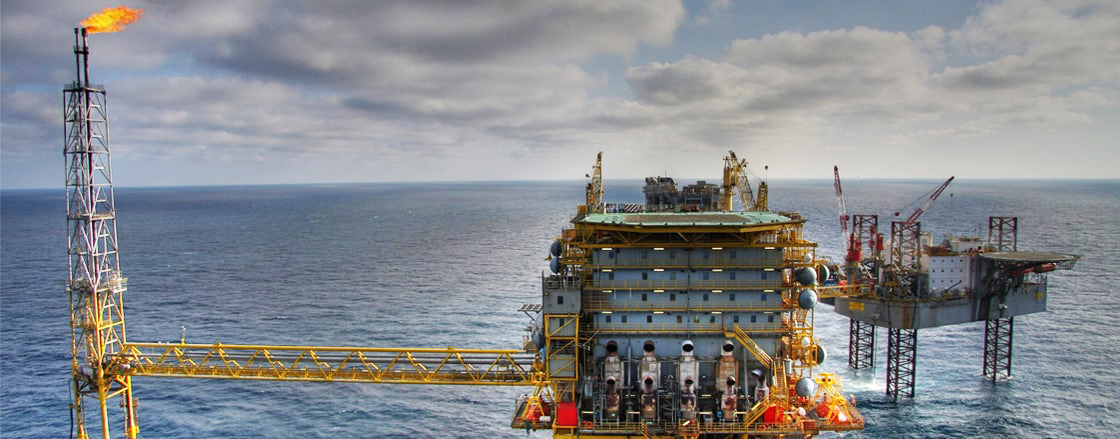
Offshore oil drilling is not an easy task, the offshore oil platforms should be designed to function safely for period usually longer than twenty-five years, so this could be a significant challenge to the design engineers.
The sea floor can sometimes be thousands of meters below sea level. While with onshore drilling the ground provides a platform from which to drill, at sea an artificial drilling platform must be constructed.
Offshore structures are designed for installation in the open sea, lakes and gulfs, many kilometers from shorelines. They are exposed to the harsh marine conditions like waves, hurricanes, fatigue loads generated by waves over the platform, motion of the platform, strong currents. That is why there are many factors to be considered when designing the platform. The structure of a platform is from steel, reinforced concrete or a combination of both. There are various types of structures, depending on their use and primarily on the water depth in which they will be placed. Offshore platforms are among the tallest manmade structures on the earth.
Types of offshore oil platform and rigs
Depending on the on the oil/gas field, water depth and position of the platform, there are different types of platforms. The offshore drilling platforms may also be movable, they can be moved from one place to another
Drilling barges
Drilling barges are used mostly for inland, shallow water drilling in lakes, swamps, rivers, and canals. They are large, floating platforms, which are not self-propelled and rely on tugs for transportation from one place to another. Suitable for still, shallow waters and not open seas.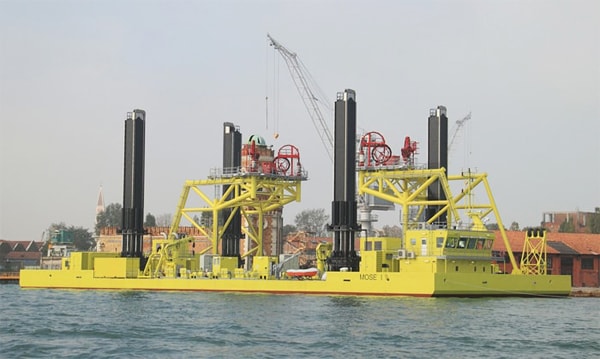
Figure 1. Barge platform.
Jackup platforms/rigs
Jackup rigs are self-elevating units, similar to drilling barges, with one difference. Once a jack-up rig is towed to the drilling site, its legs are lowered until they rest on the sea bottom and the drilling equipment is jacked up above the water's surface. This allows the working platform to rest above the surface of the water, as opposed to a floating barge, providing a very stable drilling environment. Jackups have become the most popular type of mobile offshore drilling unit (MODU). When their legs are not deployed, jackups float, which makes these types of MODUs quite easily transported from one drilling location to another. While some are capable of self-propulsion and do not need an outside source for movement, most jackups are transported via tug boats or submersible barges. While towing is easily performed, barges are the transportation of choice when the jackup needs to be moved quickly or over a longer distance.
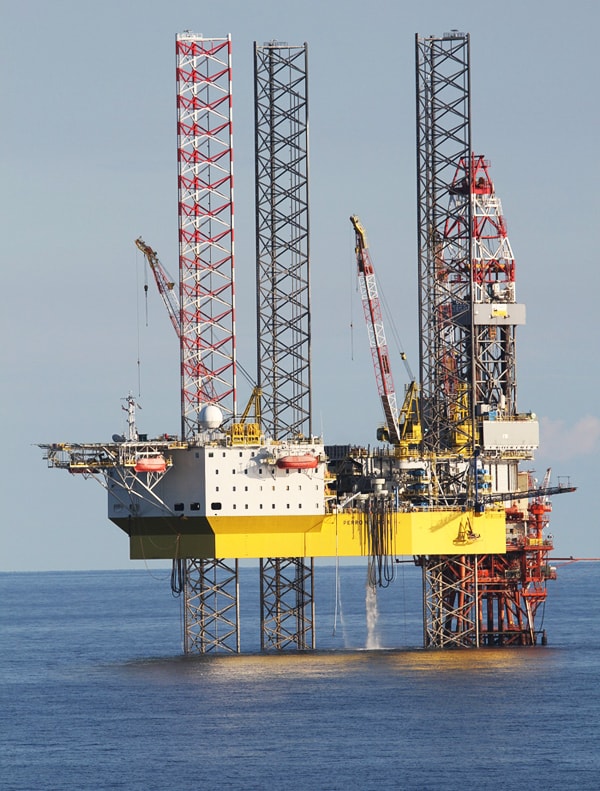
Figure 2. Jackup rig with.
Jackup legs
A jackup design involves three or four legs, as there are two main types of legs that are used on jackups. The first incorporates open-truss legs into the design that is similar to electrical towers (Figure 3). Open-truss legs are made of tubular steel sections that are crisscrossed, making them strong, but lightweight.
The second type of leg legs are columnar, made of huge steel tubes. Columnar legs are less expensive but also less stable and cannot adapt to stresses in the water as well as open-truss legs. For this reason, columnar-legged jackups are not used in waters that measure more than 70-80 meters deep.
Jack-up rigs are suitable only for shallower waters, as extending these legs down too deeply would be impractical. This rig type can only operate to about 150 meters in the depth of water.
Jackup stabilization systems
In addition to their legs, jackups are supported by two different systems of stabilization - either mats or spud cans.
Spud cans are steel cylinders with pointed ends, they are attached to the bottom of each leg, and the spike in the can is driven into the floor, adding stability to the rig.
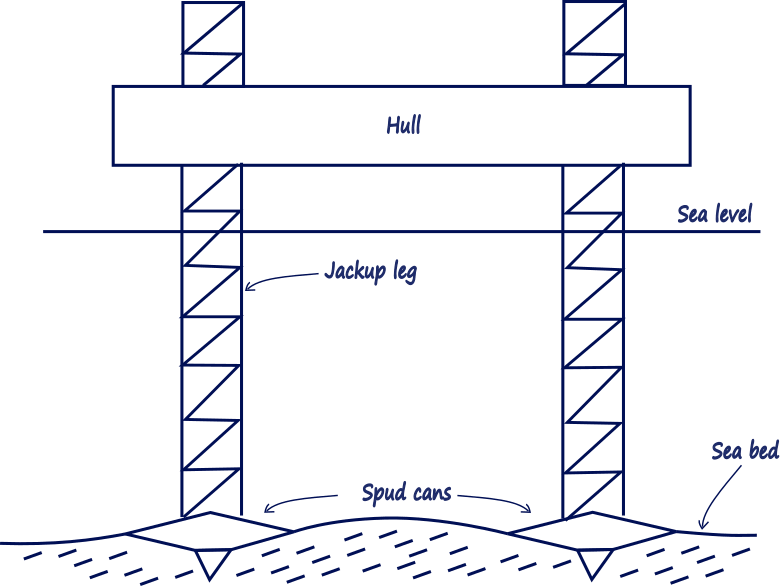
Figure 3. Spudcans.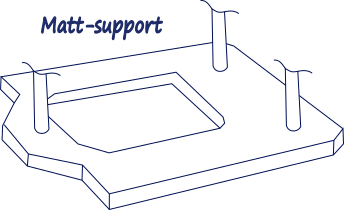
Figure 4. Matts.
Matt stabilization is used for soft floor sea beds, this kind of systems allow distribution of the rig’s weight across the sea floor
Jackup elevating devices
Once the jackup is over the drilling location, the legs are lowered to the sea bottom ant the rig hull and drilling equipment are elevated above the water surface. There are two main type ov elevating equipment.
The first type uses hydraulic cylinders equipped with moving and stationary pins. These cylinders extend and retract to climb up and down the legs of the jackup. The other type of elevating device employs a rack and two pinion gears that are turned to move the legs up and down.
Drilling Devices
There are two ways to mount the drilling equipment on the hull. The most popular design for drilling equipment is a cantilevered jackup. Here, the drilling derrick is mounted on an arm that extends outward from the drilling deck. With a cantilevered jackup, drilling can be performed through existing platforms, as well as without them.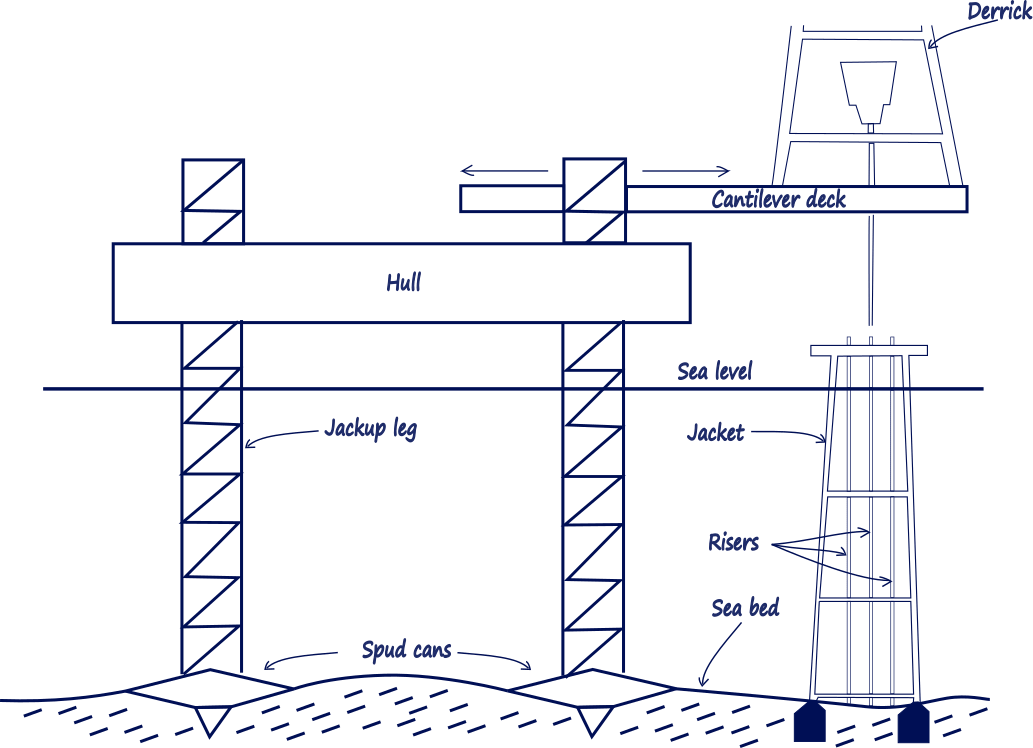
Figure 5. Cantilevered jackup.
The slot rig has an area within the outer limits of the rig through which all drilling is done. The derrick is located over the slot.
Submersible platforms/rigs
Submersible rigs are used in shallow water, they come in contact with the ocean or lake floor. These rigs consist of platforms with two hulls positioned on top of one another. The upper hull contains the living quarters for the crew, as well as the actual drilling platform. The lower hull works much like the outer hull in a submarine – when the platform is being moved from one place to another, the lower hull is filled with air – making the entire rig buoyant. When the rig is positioned over the drill site, the air is let out of the lower hull, and the rig submerges to the sea or lake floor. This type of rig has the advantage of mobility in the water; however, once again its use is limited to shallow water areas.
Semi-submersible platforms/rigs
This is an offshore oil rig that has a floating drill unit that includes columns and pontoons that, if flooded with water, will cause the pontoons to submerge to a depth that is predetermined. Semi-submersible rigs are the most common type of offshore drilling rigs, combining the advantages of submersible rigs with the ability to drill in deep water. Semi-submersible rigs work on the same principle as submersible rigs; through flooding of its lower hull. The rig is partially submerged, but still floats above the drill site. When drilling, the lower hull, filled with water, provides stability to the rig. Semi-submersible rigs are generally held in place by huge anchors, each weighing upwards of ten tons. These anchors, combined with the submerged portion of the rig, ensure that the platform is stable and safe enough to be used in turbulent offshore waters. Semi-submersible rigs can also be kept in place by the use of dynamic positioning. Semis-ubmersible rigs can be used to drill in deeper water. Now with a leap in technology, depths of up to 1800 m can be achieved safely and easily. This type of rig platform will drill a hole in the seabed and can be quickly moved to new locations.
Drillships
Drillships are ships designed to carry out drilling operations, they are specially designed to carry drilling platforms out to deep-sea locations. A typical drillship will have, in addition to all of the equipment normally found on a large ocean ship, a drilling platform and derrick located on the middle of its deck. In addition, drillships contain a hole called a “moonpool”, extending right through the ship down through the hull, which allows for the drill string to extend through the boat, down into the water. This offshore oil rig can drill in very deep waters. Drillships use 'dynamic positioning' systems. Drillships are equipped with electric motors on the underside of the ship’s hull, capable of propelling the ship in any direction. These motors are integrated into the ships computer system, which uses satellite positioning technology, in conjunction with sensors located on the drilling template, to ensure that the ship is directly above the drill site at all times.
Fixed platforms
In certain instances, in shallow water, it is possible to physically attach a platform to the sea floor. This is what is shown above as a fixed platform rig. The 'legs' are constructed of concrete or steel, extending down from the platform, and fixed to the seafloor with piles. With some concrete structures, the weight of the legs and seafloor platform is so great, that they do not have to be physically attached to the seafloor, but instead simply rest on their own mass. There are many possible designs for these fixed, permanent platforms. The main advantages of these types of platforms are their stability; as they are attached to the sea floor, there is limited exposure to movement due to wind and water forces. However, these platforms cannot be used in extremely deep water; it simply is not economical to build legs that long.
There are different types of fixed platforms:
- Jacket platforms
- Compliant Towers (Tower platforms)
- Seastar platforms
- Floating production systems
- Tension leg platforms
- Subsea system
- Spar Platforms
Jacket platforms
Jacket refers in the oil and gas exploration and production to the steel frame supporting the deck and the topsides in a fixed offshore platform. Most of the platforms are used in the shallow waters of the continental shelf, so 95% of the offshore platforms in the world are jacket designed. In these areas and where the water depth does not exceed 500 meters, these platforms may be anchored directly to the seabed. The steel framed is tubular structure attached to sea bed with piles which are driven into the seafloor (legs act as a guiding device or “jacket” for the piles). The structure is constructed in sections and transported to the site. Life time is about 10 to 25 years.
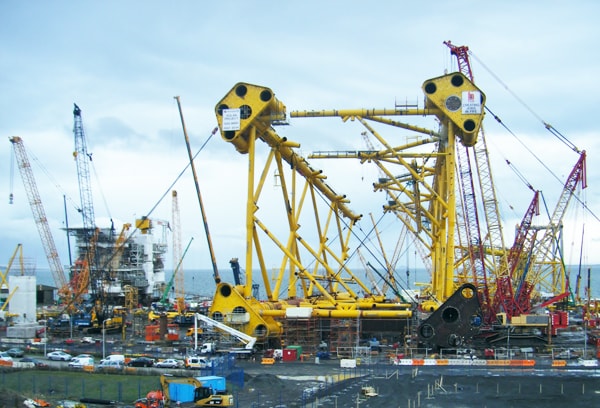
Figure 6. Steel frame construction.
Compliant Towers (Tower platforms)
Compliant towers are similar to fixed platforms in that they have a steel tubular jacket that is used to support the surface facilities. Unlike fixed platforms, compliant towers yield to the water and wind movements in a manner similar to floating structures. Like fixed platforms, they are secured to the seabed with piles. The jacket of a compliant tower has smaller dimensions than those of a fixed platform and may consist of two or more sections. It can also have buoyant sections in the upper jacket with mooring lines from jacket to seafloor (guyed-tower designs) or a combination of the two. Once the lower jacket is secured to the seafloor, it acts as a base (compliant tower) for the upper jacket and surface facilities. The compliant towers may reach 900 meters depth.
Seastar platforms
These platforms are a larger version of semi-submersible design. But instead of anchors, they are connected to the ocean bed by flexible steel legs. These platforms usually operate in water depths ranging from 150 to 1,060 meters.
Floating production systems
FPSO (floating production, storage, and offloading system) are the major floating production system. They can be used either as floating semi-submersible platforms or drillships as per the requirements. They are mainly used for processing and storage of oil and gas, and can operate in water depths up to 1,800 meters. The platforms can be kept in place through large, heavy anchors, or through the dynamic positioning system used by drillships. With a floating production system, once the drilling has been completed, the wellhead is actually attached to the seafloor, instead of up on the platform. The extracted petroleum is transported via risers from this wellhead to the production facilities on the semi-submersible platform.
Tension leg platforms (TLP)
Tension leg platforms are larger versions of the Seastar platform. The long, flexible legs are attached to the seafloor, and run up to the platform itself. As with the Seastar platform, these legs allow for significant side to side movement (up to 6 meters), with little vertical movement. Tension leg platforms can operate as deep as 2130 meters. The tension leg mooring system allows for horizontal movement with wave disturbances, but does not permit vertical, or bobbing, movement, which makes TLPs a popular choice for stability. The basic design of a TLP includes four air-filled columns forming a square. These columns are supported and connected by pontoons, similar to the design of a semisubmersible production platform.
Subsea system
Subsea production systems are wells located on the sea floor. As in a floating production system, the petroleum is extracted at the seafloor, and then can be 'tied-back' to an already existing production platform. The well can be drilled by a moveable rig, and instead of building a production platform for that well, the extracted oil and natural gas can be transported by a riser or even undersea pipeline to a nearby production platform. This allows one strategically placed production platform to service many wells over a reasonably large area. Subsea systems are typically in use at depths of 2100 meters or more, and do not have the ability to drill, only to extract and transport.
Spar Platforms
A floating platform alternative that can support drilling, production and storage operations, the spar consists of a large vertical cylinder bearing topsides with equipment. Spar platforms are among the largest offshore platforms in use. The cylinder does not extend to the sea bottom, instead it is attached with cables and lines. The large cylinder serves to stabilize the platform in the water, and allows for movement to absorb the force of potential hurricanes. Additionally, the bottom of the cylinder includes a ballasting section with material that weighs more than water, ensuring the center of gravity is located below the center of buoyancy.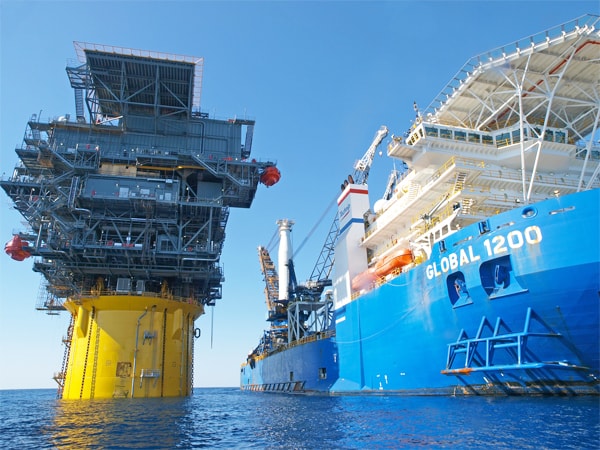
Figure 7. Over water view of a Spar platform.
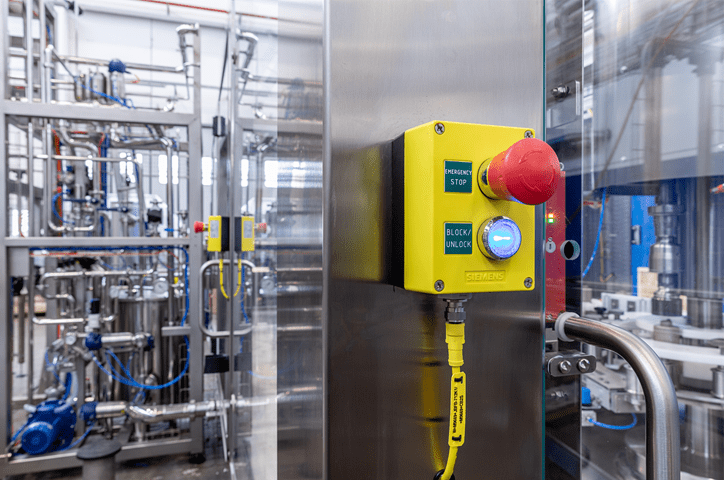
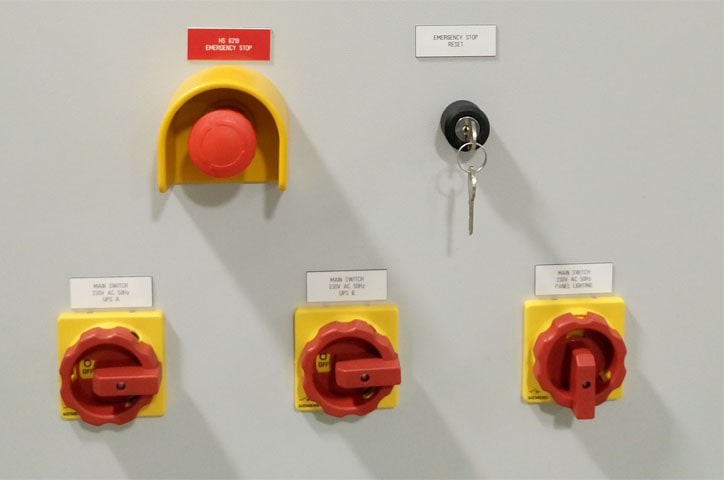
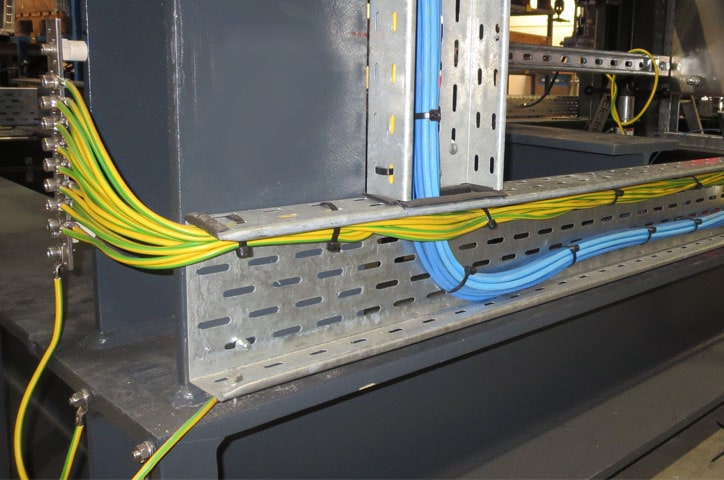
0 COMMENTS //
Join the discussion